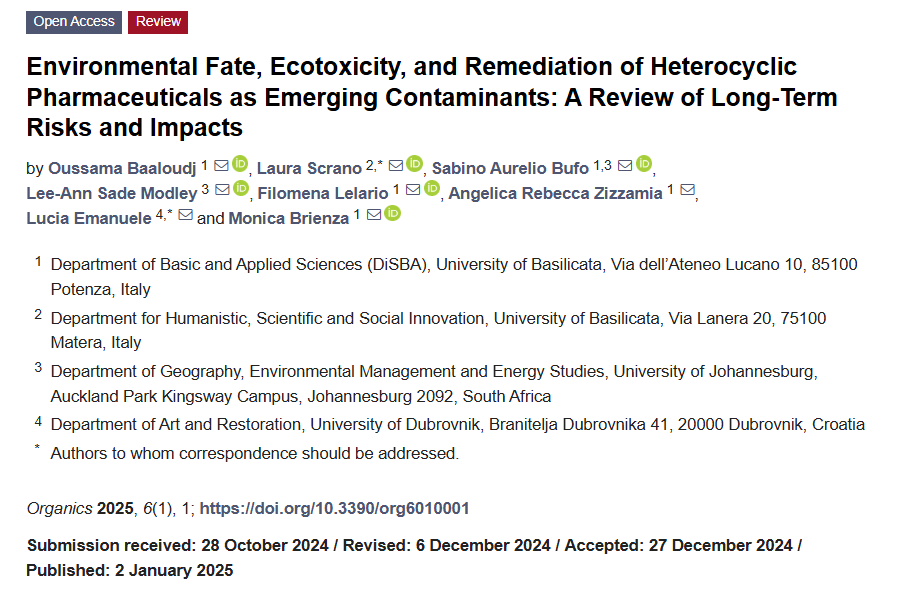
Conducted within the framework of the PRIMA-SAFE project, a review published in Organics analyzes the occurrence, toxicity, and persistence of heterocyclic pharmaceuticals in water and soil. These widely used compounds are now recognized as critical emerging contaminants due to their resistance to degradation and potential ecological impact.
Key Findings
- Heterocyclic compounds, which constitute over 90% of newly developed drugs, are persistent and often detected in surface and groundwater, sometimes at concentrations as high as 11,000 ng/L.
- These compounds can cause neurotoxicity, genotoxicity, carcinogenicity, and endocrine disruption in both humans and wildlife.
- Their high solubility and stability allow them to accumulate in the environment, even at low concentrations.
- Conventional wastewater treatments are largely ineffective; advanced oxidation processes, membrane filtration, bioremediation, and adsorption techniques show greater potential for removal.
Implications
The study highlights the urgent need for new regulatory frameworks and innovative treatment solutions to prevent the environmental and health hazards associated with heterocyclic pharmaceuticals. It also stresses the importance of adopting a One Health approach that recognizes the interconnection between environmental, human, and animal health.
Reference
Baaloudj O., Scrano L., Bufo S.A., Modley L.-A.S., Lelario F., Zizzamia A.R., Emanuele L., Brienza M. (2025).
Environmental Fate, Ecotoxicity, and Remediation of Heterocyclic Pharmaceuticals as Emerging Contaminants: A Review of Long-Term Risks and Impacts.
Organics, 6(1), 1.
DOI: 10.3390/org6010001

